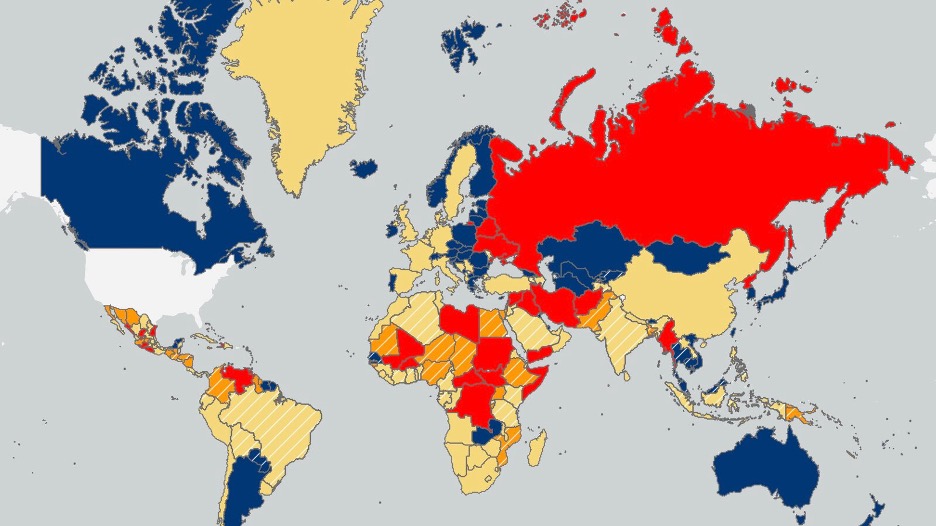What to do when government alerts clash with reality—and why context matters more than rankings.

New countries seem to be landing on the US “Do Not Travel” list faster than you can say “passport renewal.” And it makes perfect sense. Between conflicts in Ukraine and the Middle East, instability across Africa, and political drama practically everywhere else, some destinations are obvious no-gos right now.
But here’s the brain-twisting reality: every single country gets a risk assessment, and some of the rankings will make you do a serious double-take.
The Four-Level Cheat Sheet
Every country gets assigned a number between 1 and 4. (Mexico gets special treatment with state-by-state ratings because, well, Mexico.) Here’s the breakdown:
Level 1 – Exercise Normal Precautions: The travel equivalent of “you’re good to go.” Sure, there’s always some risk when you leave your home turf, but this is as safe as it gets internationally.
Level 2 – Exercise Increased Caution: Pay attention, but don’t panic. Think of it as traveling with your spidey senses turned up a notch.
Level 3 – Reconsider Travel: This is the yellow traffic light of travel advisories. Proceed with serious caution or maybe just wait it out.
Level 4 – Do Not Travel: The big red stop sign. Life-threatening risks ahead, and Uncle Sam may not be able to help you out of whatever jam you get into.
When Rankings Get Weird
Ukraine, Iran, and Afghanistan all sit in the Level 4 penalty box—no surprises there. Canada, Malaysia, and Ireland chill at Level 1, which also tracks.
Then it gets interesting. The UK lands in Level 2, right alongside parts of Mexico like Quintana Roo (home to Cancun and Tulum). In 2023, the UK—with 68 million people—had around 570 homicides. Meanwhile, Quintana Roo, with just 1.8 million residents, saw 1,596 homicides during roughly the same period. The catch? Most violence is gang-related, and tourists typically stay clear of it—but they’re in close proximity. The UK’s Level 2 rating comes mainly from terrorism threats. Valid concern, but there was only one terrorist attack there in 2024.
The Real Twist
I’m not playing travel advisory fact-checker, but trying to put these warnings in context. A new advisory doesn’t automatically mean a destination is dangerous—it’s just another data point to consider.
The UK might be statistically safer than Quintana Roo day-to-day, but the threats that do exist there are substantial and worth considering. The ironic counterpoint? People are currently visiting Taliban-controlled Afghanistan and posting rave reviews, with the Taliban actively encouraging tourism.
Travel advisories serve as helpful context, not gospel truth. They’re one piece of the puzzle, not the complete picture. The key is doing your homework, considering multiple sources, and remembering that raw numbers don’t always tell the whole story. Sometimes the most “dangerous” places on paper are perfectly navigable with proper awareness, while seemingly safe destinations might have specific risks that don’t show up in statistics.
Twist’s Take: Government warnings are starting points, not final verdicts.
